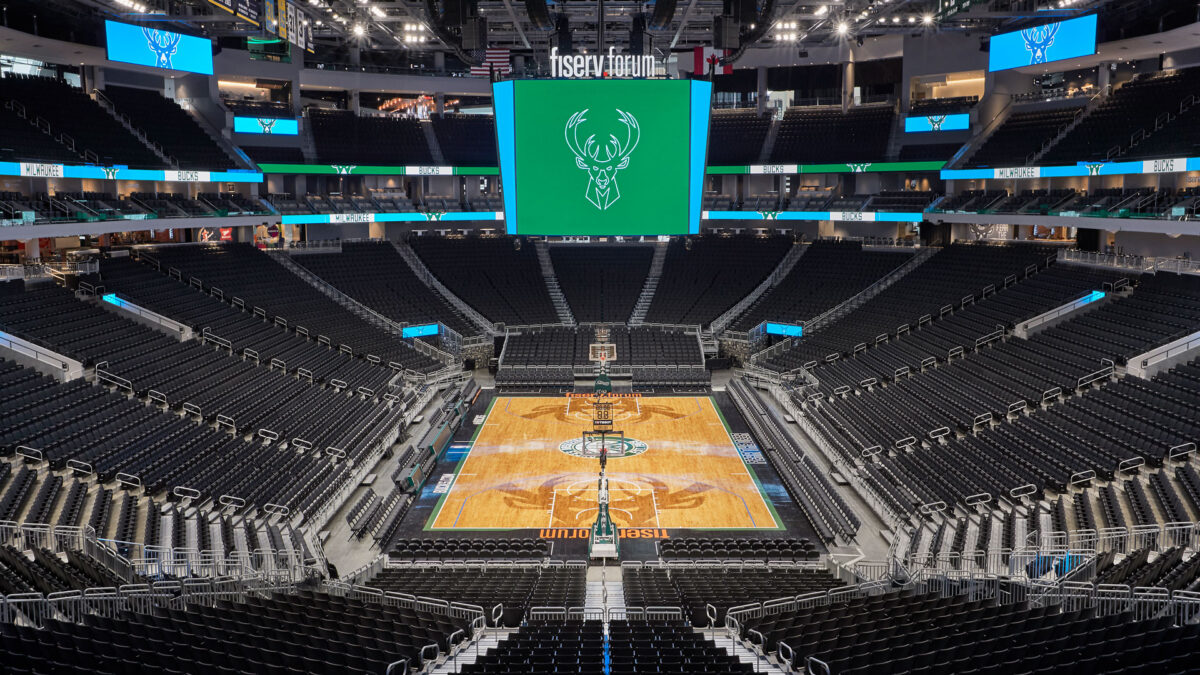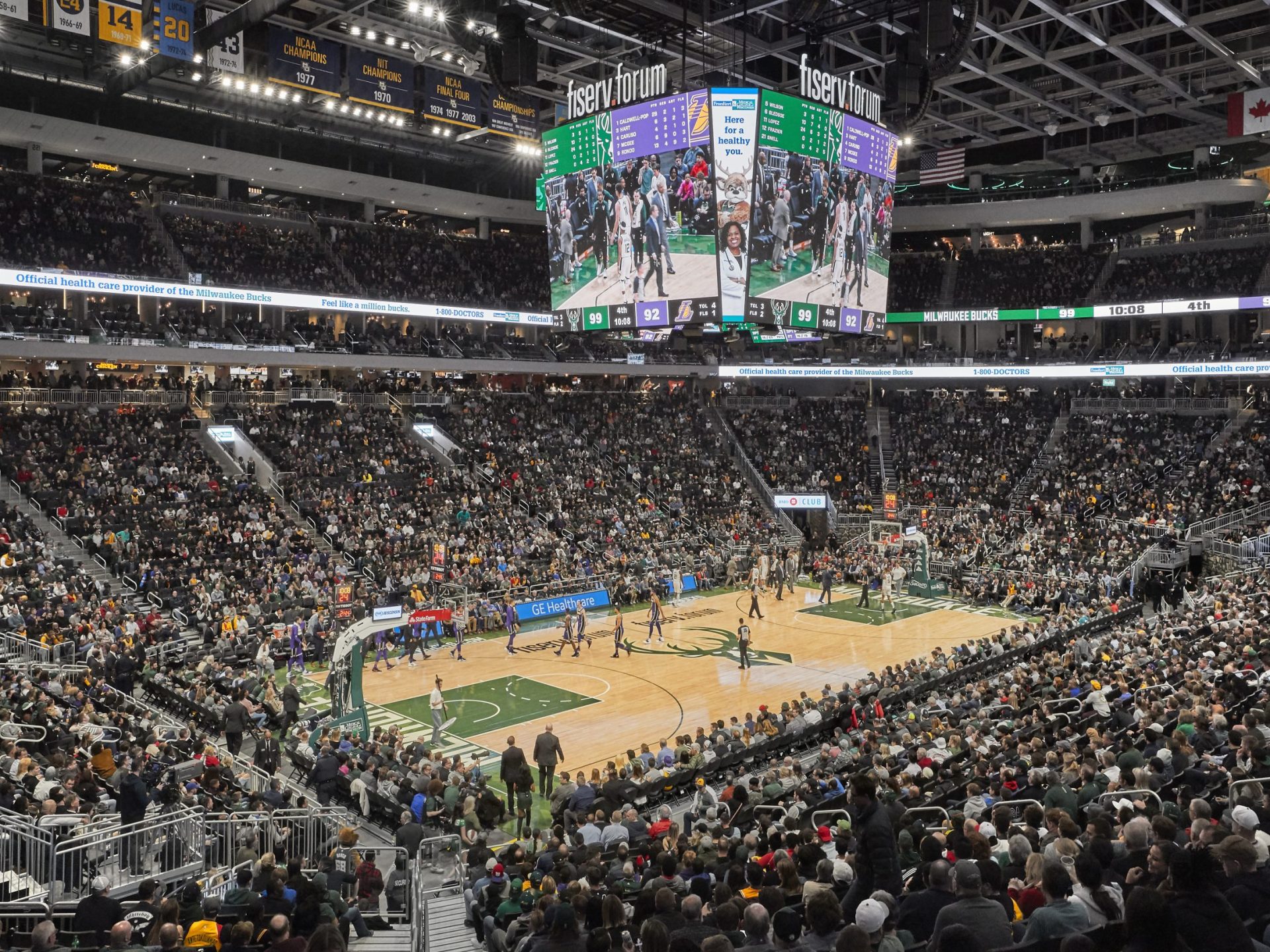Perspectives

November 26, 2024

If the B.LEAGUE is to achieve its goal of rivalling the NBA (National Basketball Association) and become the world’s second-largest basketball league, then it must have arenas across the country that will not only meet the required capacity for games, but will also facilitate that 2-for-1 sporting and entertainment experience so familiar with the north American game.
In 2023, major B.LEAGUE reforms were introduced requiring top category (B1) teams to attract a minimum audience of 4,000, revenue of 1.2 billion yen (approximately USD$8.4 million), and have a home arena capable of hosting 5,000 basketball fans.
One such venue that is already enhancing the fan experience is LaLa Arena TOKYO-BAY, home to the Chiba Jets Funabashi. The venue, which opened in 2024, is the first privately owned arena in the B.LEAGUE. It is a six-minute walk from Minami-Funabashi Station and is adjacent to the Mitsui Shopping Park Lalaport Tokyo Bay, creating a broader entertainment precinct around the arena that encompasses dining and retail attractions.
Lala Arena has a special place in my career history as I led the design in my role as Architect at Japan’s Shimizu Corporation. Moving to Populous upon completion, I saw an opportunity to bring this NBA-style arena model and decades of arena design experience to other Japanese clubs and municipalities in partnership with my local understanding of how the game is developing.
Taking a shot at the north American approach, the B.LEAGUE saw game attendance increase to some 4.52 million in Japan’s top two divisions during the 2023/24 season, a 40% rise from the previous year.
To accommodate this growing fanbase, private investment must be available to develop more US style multi-purpose arenas, capable of hosting several events a week, including basketball games but also concerts and other sports and cultural events. These types of arenas and the design expertise needed to develop them doesn’t exist in Japan and although local Japanese architecture firms can adapt examples from overseas, the speed at which this infrastructure is needed means that we must look internationally and modify overseas design regulations, technology and approaches to create something culturally fitting for the Japanese market.
My experience designing LaLa Arena with Shimizu was just that; where my team worked with international designers throughout the development – a combined approach that helps to bring broader NBA arena expertise into the Japanese market.
LaLa Arena consists of four floors above ground with a total floor area of 31,000m2. It is equipped with a main display screen that moves up and down, as well as ribbon screens around the arena to create promotional visual effects. This internal space, reflects very much an NBA entertainment arena style with a bowl shape that creates a sense of proximity between players and spectators.
As Japan looks to the NBA model, I’m excited about how Populous can bring our extensive premium sports and entertainment experience from purpose designed NBA arenas.
The Toyota Arena Tokyo is part of this new generation and will open in 2025. Populous led the concept design and advised Toyota Alvark Tokyo Corporation and Toyota Group on the latest NBA arena design trends, developing a concept design to set the venue apart from other basketball arenas in Japan. The arena has attracted significant interest. So much so that it will be the home to both Alvark Tokyo and Sunrockers Shibuya – the first time an arena in Japan will be home to two professional basketball teams.
Arenas like Toyota Alvark Tokyo take inspiration from venues such as the 18,000 seat Populous designed Fiserv Forum in Milwaukee. While Fiserv Forum’s primary tenants are the Milwaukee Bucks and Marquette men’s basketball team, the arena was always intended to be an entertainment hub for the city to host performance acts, concerts and more. The venue booked more than 22 concerts alone for its inaugural year.
And Fiserv Forum is much more than an NBA arena in isolation from its surrounding precinct. In fact, it is an anchor to the district’s further development with the plaza activated on non-event days to include entertainment and retail for the community.
The B.LEAGUE understands that game day is only one part of basketball’s cultural and economic turnover. As the NBA has demonstrated, sport is entertainment and what happens off the court can be just as lucrative for clubs as what happens on the court.
Revenue for clubs in the B.LEAGUE was 58.8 billion yen (USD$394 million) during the 2023/24 season, tripling from the inaugural 2016/17 season following the amalgamation of two different leagues.
The league is therefore creating a shift in focus to community collaboration with clubs assigned to a league based on their business strategies and community involvement.
Lala Arena is an example of how a basketball arena can be more than just a sports centre, integrating with the surrounding precinct to form a cultural hub. The arena is a central part of the revitalisation of the TOKYO-BAY precinct, encouraging collaboration with and circulation among the neighboring shopping park and easy access to transport facilities.
Many of these new arenas in Japan will need to be built on brownfield sites. As Populous Senior Principal Brett Wightman says, it’s a challenge that Populous has often turned into a community opportunity.
The LDLC Arena in Lyon, France was completed in 2023 on the site of a former industrial wasteland. The 16,000 seat multi-purpose venue is capable of hosting between 100 and 120 events per year, including Euroleague basketball matches. Similarly, while the Populous designed Co-op Live, the UK’s largest-capacity indoor arena, has been designed to provide the best possible entertainment experience, getting to the venue is part of that experience with spectators able to enjoy a vibrant 25-minute walk from Manchester city centre to the venue along the Citylink walking route that connects Piccadilly Station to the arena. The route enhances the fan experience and offers an engaging journey filled with unique features such as public art installations.
"A venue can act as an anchor to regenerate a part of a city often neglected, not just in major centres but also in regional areas that are going through regeneration"
B.LEAGUE teams only play 36 home games each year, leaving 329 days when clubs have the opportunity to reimagine the arena space for other sports and entertainment.
There is deep knowledge – creating the best live experiences – that Populous brings to our Japanese clients when designing a multi-purpose space, such as from the Zero Carbon Certified Climate Pledge Arena in Seattle, which is home to both the WNBA’s Seattle Storm and National Hockey League’s Seattle Kraken, and attracts major international pop and rock artists such as Coldplay, which previously bypassed the old KeyArena venue because of logistics and audio issues.
It’s no coincidence that LaLa Arena has adopted a mortar-shaped bowl design, ensuring that both players and artists feel closer to the audience at basketball games, music concerts, and other cultural and sporting events.
The business of the B.LEAGUE is in fact a business of entertainment, just as it is sports, and while we will need to design new homes for B.LEAGUE clubs, these homes will be just as much homes for the community – from kids coming to see their heroes to businesses entertaining clients – as they are for the players, becoming 365 days a year entertainment venues.
The recent reforms to the B.LEAGUE will not only usher in a new era of Japanese basketball, but also create the opportunity for the development of new physical sporting infrastructure heroes to support our basketball stars – blending extraordinary entertainment with intense competition.
Yuki Kawamura’s profile at the NBA’s Memphis Grizzlies continues to rise locally and closer to home Japan forward Yuta Watanabe’s move to Chiba Jets after six seasons in the NBA has undoubtedly been the biggest pull ahead of the new season, with the club seeing a surge in membership and selling out games in advance. I’m really looking forward to being able to watch Yuta play home games in a stadium that I led the design of as well as seeing how the fans react to the game in the Jets’ new home.
As other B.LEAGUE teams and their hometowns see the social and economic benefits from bigger crowds when Chiba comes to play on the road, I’m excited for Populous to work with these clubs and municipalities to design arenas fit for teams that are expected to bring in seven million spectators and 80 billion yen worth of business by the 2028/29 season. Populous is designing world-class arenas that will usher in a new era of entertainment for Japanese audiences and a new level of on court experience for Japanese players – taking the B.LEAGUE to the world.
Lorem ipsum dolor sit amet consectetur, adipisicing elit. Non facere corporis et expedita sit nam amet aut necessitatibus at dolore enim quis impedit eius libero, harum tempore laboriosam dolor cumque.
Lorem, ipsum dolor sit amet consectetur adipisicing elit. Illo temporibus vero veritatis eveniet, placeat dolorem sunt at provident tenetur omnis, dicta exercitationem. Expedita quod aspernatur molestias eum? Totam, incidunt quos.